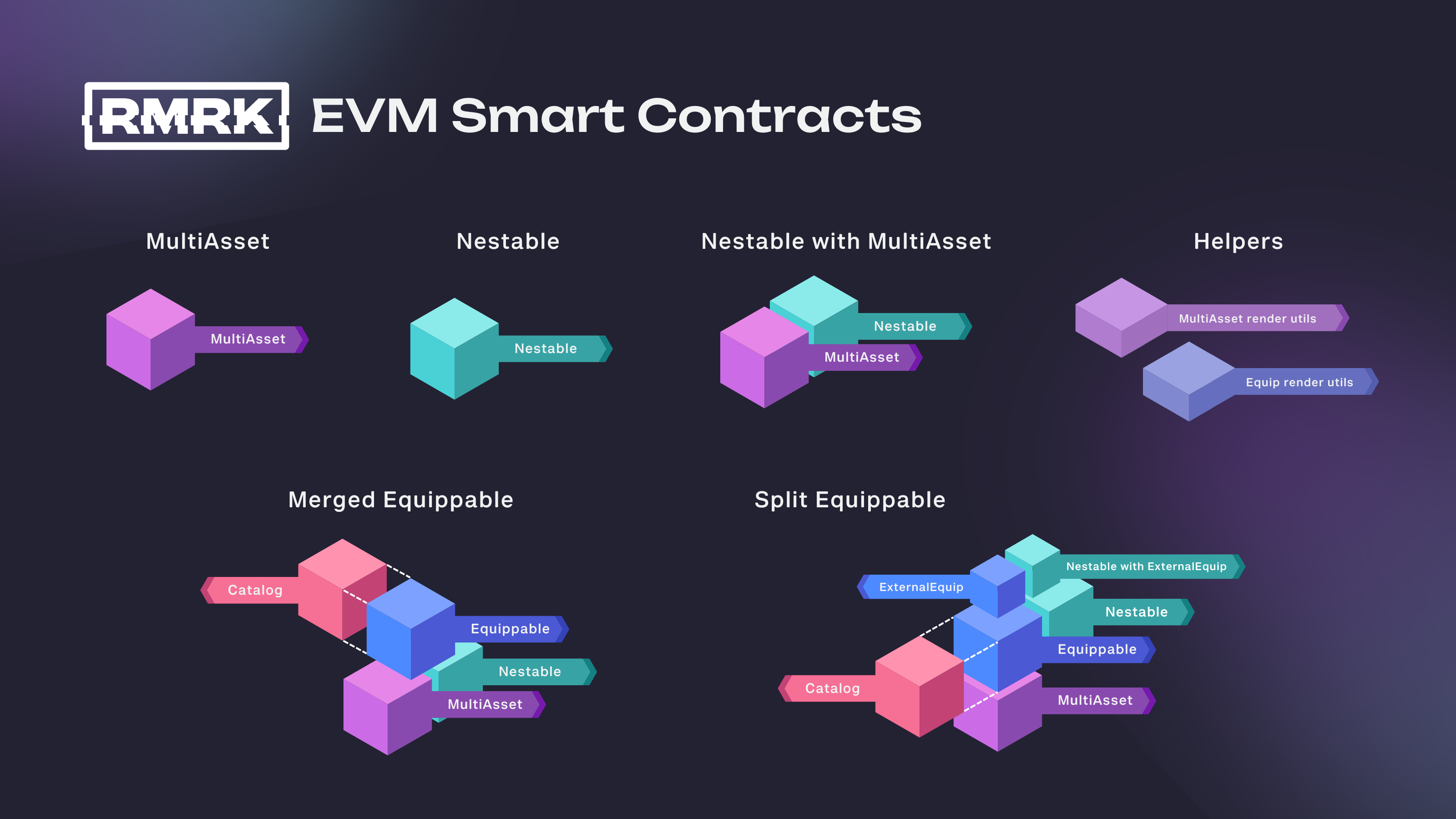A set of Solidity sample contracts using the RMRK standard implementation on EVM.
RMRK is a set of NFT standards which compose several "NFT 2.0 lego" primitives. Putting these legos together allows a user to create NFT systems of arbitrary complexity.
There are various possibilities on how to combine these legos, all of which are ERC721 compatible:
- MultiAsset (Context-Dependent Multi-Asset Tokens)
- Only uses the MultiAsset RMRK lego
- Nestable (Parent-Governed Nestable Non-Fungible Tokens)
- Only uses the Nestable RMRK lego
- Nestable with MultiAsset
- Uses both Nestable and MultiAsset RMRK legos
- Equippable MultiAsset with Nestable and Catalog
- Merged equippable is a more compact RMRK lego composite that uses less smart contracts, but has less space for custom logic implementation
- Split equippable is a more customizable RMRK lego composite that uses more smart contracts, but has more space for custom logic implementation
The first 3 use cases have stand alone versions with both minimal and ready to use implementations. The latter two, due to Solidity contract size constraints, MultiAsset and Equippable logic are included in a simgle smart contract, while Nestable and ownership are handled by either the same smart contract or a separate one. Catalog is also a separate smart contract for practical reasons, since one Catalog can be used by multiple tokens.
You can start using the RMRK EVM implementation smart contracts by installing the dependency to your project:
npm install @rmrk-team/evm-contracts
Once you have installed the @rmrk-team/evm-contracts dependency, you can refer to one of the samples residing in this
repository's contracts/ directory. The versions starting with Simple keyword are ready to
use; you can simply extend those for your own contracts and pass fixed or variable parameters to the constructor. The
examples starting with Advanced keyword showcase the implementation where you have more freedom in implementing custom
business logic. The available internal functions when building it are outlined within the examples.
For each of the lego combinations we have sample versions:
Additionally we have render util contracts. The reason these are separate is to save contract space. You can have a single deploy of those and use them on every contract or even use the exising ones (We'll provide them in the future):
MultiAsset render utilsprovides utilities to get asset objects from IDs, and accepted or pending asset objects for a given token. The MultiAsset lego provides only IDs for the latter.Equip render utilsprovides the same shorcuts on extended assets (with equip information). This utility smart contract also has views to get information about what is currently equipped to a token and to compose equippables for a token asset.
